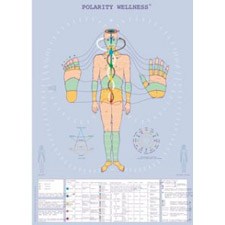

In music, the most popular use of a tuning fork is to, well, tune! Good tuning forks are made of solid, consistent materials such as aluminum, steel, or alloy. If you can hear the tuning fork, then just like any hearing test, you will raise your hand acknowledging which ear the sound came from. The tuning fork is simply used as a means of air conduction. Sometimes the forks are hooked up to headphones to better facilitate the test. The tuning forks are rung and held behind the ear. In the medical field, tuning forks can be used as a hearing test. With tuning fork therapy, it is also believed that blood flow increases and circulation improves because constriction of specific organs is relieved. It also seems that tuning forks may reduce muscle tension and stress, pain and spasms. Consequently, ailments anywhere from physical pain to addictive behavior may be helped. With the theory of tuning fork healing, the emitted sound waves seem to restore the mind, cause deep relaxation, balance the body and help the body to heal itself. It appears that mental, physical and emotional areas can all be affected by tuning fork therapy. The tuning fork will be held over an area in discord until the body attunes itself (entrains) to the vibration and relaxes. The sound will become softer or louder where there are areas of deficient or concentrated energy. The treatment is conducted is a similar fashion as a massage, but the client will be fully clothed when reclining on the treatment table. This harmonic balancing treatment uses tuning forks to bring back balance to the body where it is needed. When this energy is transmitted through the body, the thought is that organs may be enhanced by freeing constriction of organs, thereby increasing the blood flow. Vibrations created by the tuning fork are sent to nerve endings, transmitting a signal to parts of the body. With sonopuncture, the tuning fork is held near the area of the body which needs healing. It is almost as if they are dancing together. Entrainment is the process by which two objects begin to vibrate at the same frequency. The sound waves are transported to the body through the process of entrainment. When the tuning fork is struck, the vibration causes a fluctuation of high and low pressure in the surrounding air. Although there is anecdotal evidence of the effectiveness of tuning forks, there is no scientific proof for this method of treatment. The tuning fork is said to emit energy through the body which then gets the body in tune. The procedure is derived from ancient Chinese methods. It is similar to acupuncture, but uses a tuning fork instead of small needles. Sonopuncture is one method of possible healing through the use of tuning forks. Tuning Forks and Alternative Medicine Healing with Sound Therapy or Sonopuncture

The tuning fork was invented in 1711 by John Shore, who had uses for it from parts written for him by major composers such as Frederick Handel. These vibrations resonate together, creating a particular pitch based on the length of the forks. The tone it produces is a result of vibrations running up and down the handle and the two prongs of the fork. A tuning fork is rung by hitting it on any object, usually a rubber mallet or activator.

Tuning forks are instruments used not only in the music world, but also in alternative medicine, for hearing tests, for police radar gun calibration and even in electronic watches.


 0 kommentar(er)
0 kommentar(er)
